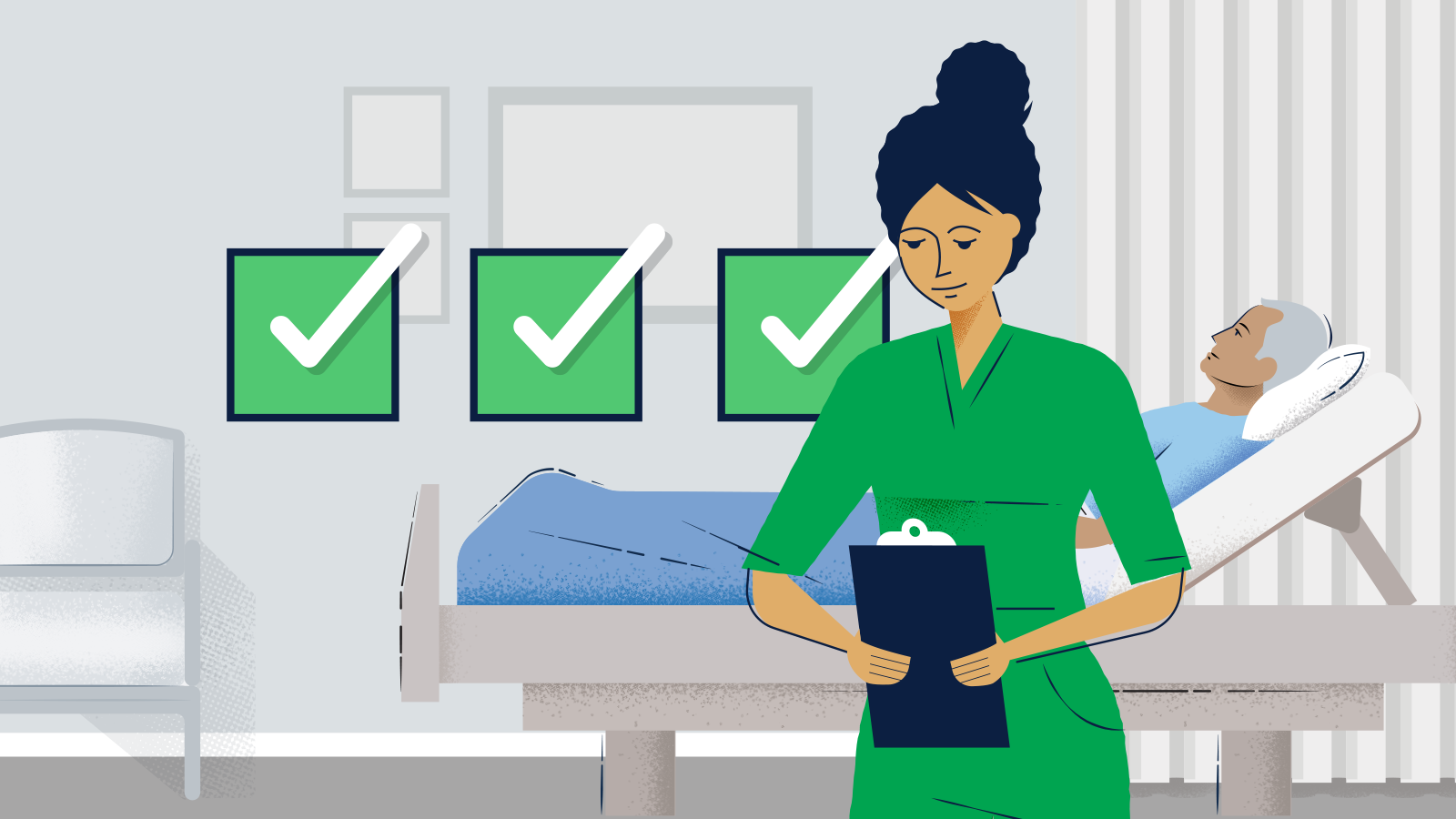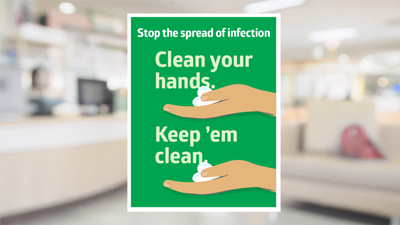Standardization in healthcare: Guidance for IPs in LTCFs
From standing orders to policy development, IPs are involved at every step.

You’re working every day to build a strong team defense in the fight against healthcare-associated infections (HAIs). How do you determine weaknesses? To help identify gaps in infection control practices, Medline completed “discovery assessments” with more than 100 long-term care providers across the nation in late 2022.
The goal being, once you assess your risk level, you’re better informed and armed to close those gaps through education, training and other viable solutions.
This article is the final in a five-part series on how to address each of the main infection control challenges identified.
So what did the assessment results show? We asked LTC leaders, “How important is clinical standardization to your organization?” Here’s what we learned:

What happens when standardization in healthcare isn’t applied in long-term care settings?
Residents’ health issues often land them in the hospital—even though conditions such as diabetes, wounds and incontinence can be well managed in the LTC facility. Unnecessary hospital stays increase seniors’ exposure to viruses and other infectious diseases. They also add to health spending.2
Let’s take a look at how to promote clinical standardization in your facility.
Drive home the benefits of using this approach
Let your clinical leaders know what can be accomplished—and that you’re ready to contribute.
- Ensures consistency of care: Standardization enables uniform practices, protocols and guidelines that all staff members follow. This consistency helps improve outcomes and enhance the overall quality of care for residents.
- Increases safety and reduces risks: By implementing standardized procedures for medication administration, infection control, fall prevention and other critical aspects of care, the likelihood of errors, adverse events and complications can be reduced.
- Fosters efficiency and appropriate resource utilization: Staff members become familiar with consistent routines and protocols, reducing unnecessary variations and redundant steps.
- Simplifies staff training and supports competency: When processes are consistent and clearly defined, it becomes easier to train new employees, ensure that all staff members are on the same page and assess their competency levels.
- Promotes regulatory compliance: Long-term care facilities are subject to various regulatory requirements and accreditation standards. Clinical standardization helps provide a framework for consistent practices and documentation.
“Standardization makes caregivers feel more confident in what they do,” says Caryn Arnold, MBA, RN, BSN, CNOR(E), a-IPC, Medline Medical Science Liaison. “It helps decrease staff frustration and time. It increases efficiencies—and it may contribute to staff retention.”
Explain how clinical standardization plays a crucial role in preventing HAIs
Standardization affects all areas of HAI prevention.
- Hand hygiene protocols: Handwashing techniques, use of hand sanitizers and when hand hygiene should be performed (before and after resident contact and after handling contaminated items, for example)
- Personal protective equipment (PPE) use: When and how PPE should be used to prevent the spread of infections and guidelines for wearing gloves, gowns, masks and eye protection based on the type of resident interaction or procedure
- Environmental cleaning and disinfection: Protocols on routine cleaning practices, disinfection of high-touch surfaces, equipment cleaning and handling of soiled linens. Ensuring cleaning products, techniques and frequencies are consistent and effective in reducing microbial contamination.
- Antimicrobial stewardship: Appropriate prescribing practices, dosage adjustments for renal or hepatic impairment and duration of treatment. Standardization helps prevent antibiotic misuse, reduce the development of antimicrobial resistance and minimize the risk of HAIs like Clostridioides difficile (C. diff) infection.
- Central line-associated bloodstream infection (CLABSI) prevention: Aseptic insertion techniques, proper site preparation, dressing changes and routine monitoring of central venous catheter-related infections
- Catheter-associated urinary tract infection (CAUTI) prevention: Guidelines for indwelling urinary catheter use, catheter insertion and maintenance, and proper periurethral hygiene. Standardization promotes the appropriate and timely removal of catheters and reduces unnecessary catheterization.
Collaborate with your medical director and director of nursing to achieve clinical standardization
Your knowledge is invaluable to clinical leadership.
- Create and implement policies and protocols: Policies may include infection prevention guidelines, protocols for isolation precautions, hand hygiene practices, antimicrobial stewardship and other key aspects of infection control. Provide expertise and evidence-based recommendations, making sure to incorporate input from the directors.
- Develop and provide education and training: This collaboration ensures that physicians and nurses receive appropriate education on infection control practices, standardized protocols and the rationale behind clinical standardization efforts.
- Review and revise protocols: Evaluate existing clinical protocols and identify opportunities for improvement and standardization. Protocols should be evidence-based, up-to-date and aligned with current best practices in infection prevention.
- Incorporate standing orders as appropriate: Standing orders (SOs) are pre-established protocols or orders that are authorized by a physician and can be implemented by nursing or other qualified staff members without requiring direct physician involvement. They promote consistency and prevent delays—especially important in facilities with lean overnight clinical staffing.
- Engage in collaborative decision-making: Hold regular meetings or forums to discuss and evaluate potential changes or improvements to clinical practices, equipment or products.
- Analyze data and monitor performance: Review trends, identify areas for improvement and make data-driven decisions to optimize infection prevention practices and standardize clinical protocols.
- Advocate and gain leadership support: Present a unified front to advocate for clinical standardization and infection prevention initiatives within the facility.
Keep in mind when using SOs that despite their broad use in LTC settings, SO content varies across nursing home venues and frequently lacks an evidence-based approach. Further, the SOs often reflect the individual medical director’s experience and desires.3
You’ll want to use an evidence-based method for creation of your SOs. And ensure they’re appropriate for a geriatric population—specifically, your facility’s population. Check out the SOs created by the Minnesota Association of Geriatric Inspired Clinicians (MAGIC), Clinical Practice Alliance Committee (CPAC) for ideas.4
Standardization makes caregivers feel more confident in what they do. It helps decrease staff frustration and time. It increases efficiencies—and it may contribute to staff retention.

Caryn Arnold, MBA, RN, BSN, CNOR(E), a-IPC
Medline Medical Science Liaison
Collaborate with your supply chain leader and medical supplier
Standardized products are an important component of clinical standardization. You’ll want to cover these areas:
- Team up on product selection: You and your supply chain leader can work closely with the medical supplier to evaluate and select products that align with infection prevention goals and clinical standards. Provide input on the desired features, specifications and infection control properties of medical supplies and equipment to help guide your supplier’s product offerings.
- Standardize product lines: Establish standardized product lines within the facility. The three of you can streamline the purchasing process and reduce product variations.
- Share and analyze data: Review data related to product usage, costs and outcomes. Assess the impact of different products on infection rates, patient outcomes and cost-effectiveness.
- Provide training and education: Teach healthcare workers the proper use, maintenance and storage of medical supplies. Work with the supplier to develop educational materials, conduct training sessions and disseminate information related to product standardization.
- Monitor and provide feedback on products: Inform your supplier of the performance and usability of products. If there are any issues or concerns related to product quality, functionality or compatibility with infection prevention practices, let your supplier know.
“The infection preventionist should provide guidance to the facility’s supply person,” says Arnold. “For example, that person may not realize that a specific kind of mask is needed to protect staff, or they might not realize what sort of environmental cleaning products are needed to address specific pathogens like C. diff.”
Key takeaway
Clinical standardization in long-term facilities is critical to providing consistent care for residents and keeping them safe from HAIs. By driving home its benefits and role in preventing HAIs, collaborating with your medical director and director of nursing, and partnering with your supply chain leader and medical supplier, you’ll be able to standardize processes and products for better resident care. And your caregivers will have better peace of mind.
References:
- Data on file.
- Think Research Corporation. (2021, April 22). Standardization is key to keeping seniors safe in long-term care homes. https://www.thinkresearch.com/ca/2021/04/22/best-long-term-care-seniors/
- Guetzko, J., et al. (2016, June). Standardization of Standing Orders in Long-Term Care. Annals of Long-Term Care. Standardization of Standing Orders in Long-Term Care (hmpgloballearningnetwork.com)
- Minnesota Association of Geriatric Inspired Clinicians (MAGIC), Clinical Practice Alliance Committee (CPAC). (Revised 2021, January). Standing Orders for Skilled Nursing Facilities. https://www.minnesotageriatrics.org/resources/Documents/MAGIC%20Standing%20House%20Orders%20for%20SNFs%2001.2021.pdf





